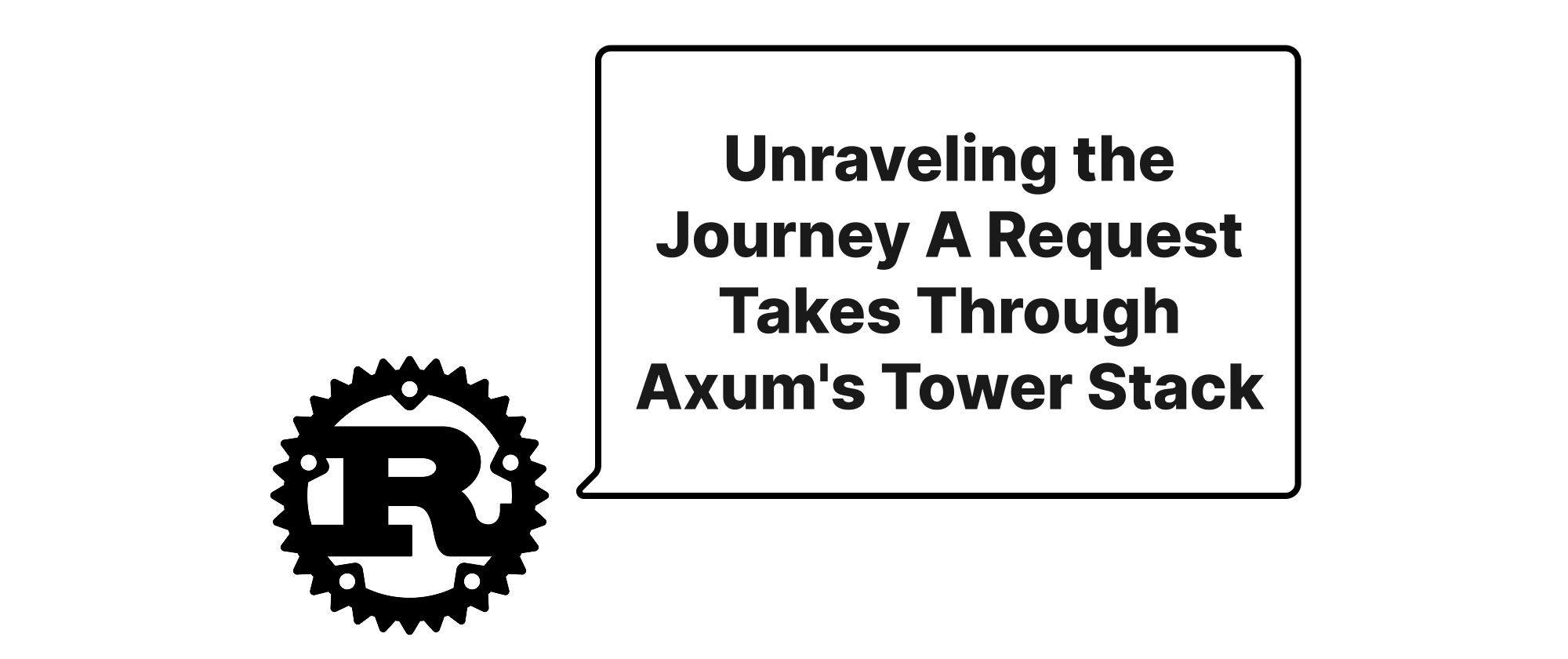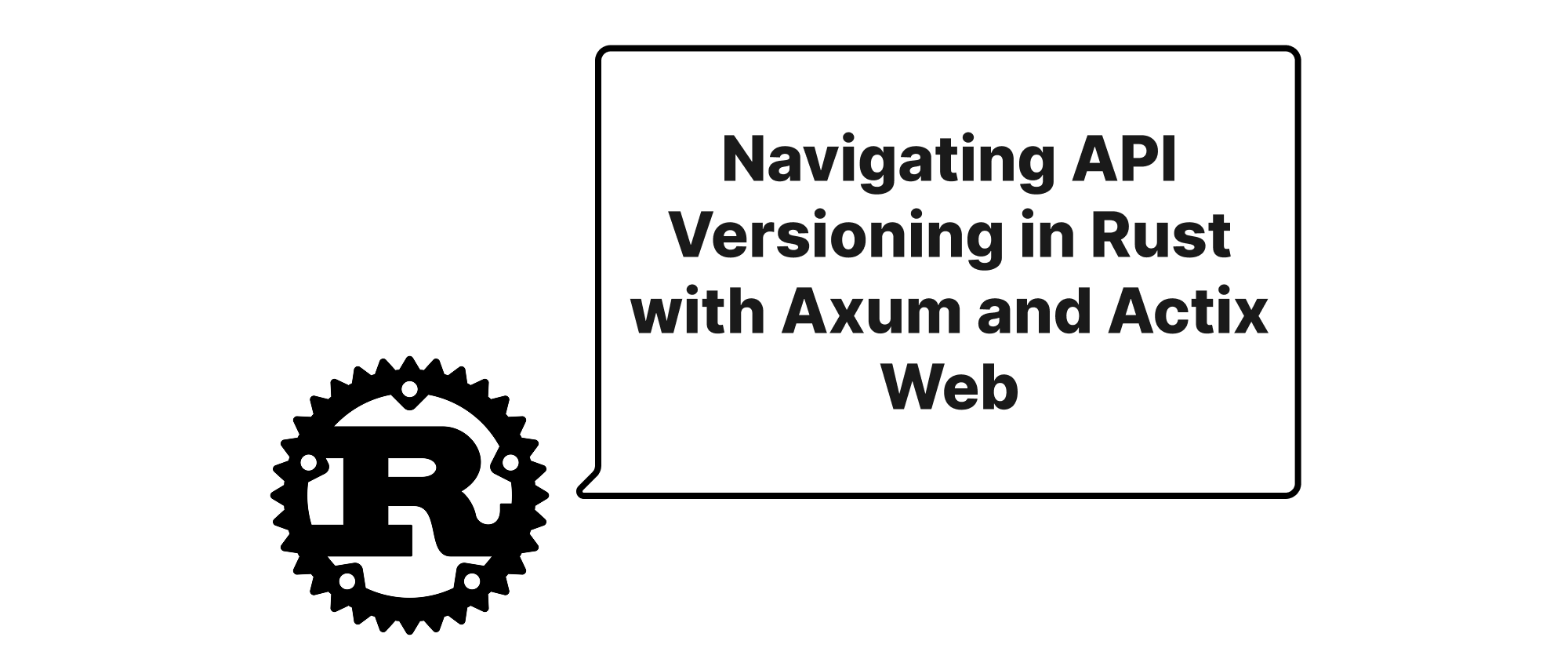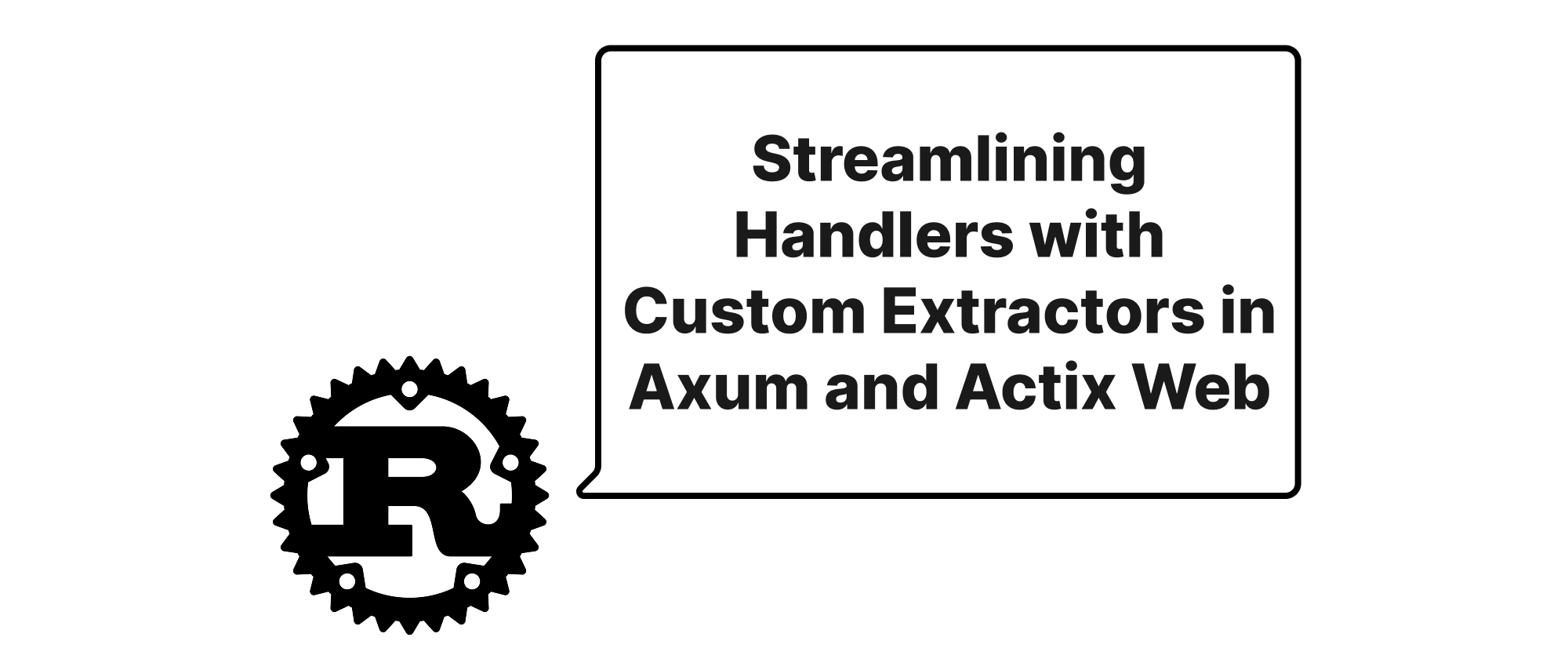Unraveling the Journey A Request Takes Through Axum's Tower Stack
Emily Parker
Product Engineer · Leapcell

Introduction
In the vibrant ecosystem of modern web development, understanding how a web framework processes an incoming request is crucial for building robust, scalable, and maintainable applications. Rust, with its focus on performance and safety, offers compelling solutions, and Axum stands out as a powerful and ergonomic web framework built atop Tokio and the highly extensible Tower ecosystem. While Axum provides a delightful developer experience, the true magic often happens behind the scenes within its Tower service stack. For developers aiming to optimize performance, debug complex issues, or implement custom middleware, a superficial understanding isn't enough. This article delves deep into the complete lifecycle of a request as it traverses Axum's Tower service stack, demystifying the underlying mechanics and empowering you to leverage its full potential.
Dissecting the Request Handling Journey
Before we trace the request's journey, let's establish a common understanding of the core terminology that underpins Axum's request processing.
Core Terminology
- Tower: A foundational library that provides a set of traits for building modular and reusable network services. At its heart are the
Servicetrait,Layertrait, andServiceBuilder. Service<Request>Trait: The fundamental building block in Tower. It represents an asynchronous function that takes a request and returns a future that resolves to a response. Its primary method iscall(&mut self, req: Request) -> Self::Future.LayerTrait: A middleware-like construct that wraps an existingServiceto add new behavior or modify its request/response. ALayer'sservicemethod takes an innerServiceand returns a newServicethat wraps it.ServiceBuilder: A type that helps construct complex service stacks by chaining multipleLayers. It offers a convenient API for applying layers sequentially.- Axum: A web framework built on Tokio and Tower. It provides ergonomic utilities for routing, extracting data from requests, handling state, and generating responses, all while leveraging Tower for its service handling.
- Handler: In Axum, a function or method that takes various extractors as arguments and returns a type that can be converted into a response. Handlers are essentially specialized services.
- Extractor: A type that implements the
FromRequestPartsorFromRequesttrait, allowing Axum to parse specific parts of an incoming request (e.g., path parameters, query strings, request body) and make them available to handlers.
The Request's Odyssey
When an HTTP request arrives at an Axum application, it embarks on a predictable and meticulously orchestrated journey through a series of services and layers. Let's break down this process step-by-step:
1. Server Reception and MakeService
At the very beginning, your Axum application is typically bound to a TCP port using a server like Hyper. Hyper, or any other HTTP server, needs a way to create a new Service for each incoming connection. This is where the MakeService trait comes into play. Axum's Router inherently implements MakeService, allowing Hyper to instantiate a new Router service for every new connection.
// Simplified example of how a server might use MakeService use tower::make::MakeService; use tower::Service; use hyper::Request; // Assuming Hyper for the http Request type async fn serve_connection<M>(make_service: &M) where M: MakeService<(), hyper::Request<hyper::body::Incoming>>, { let mut service = make_service.make_service(()).await.unwrap(); // Imagine an incoming request from the client let request = Request::builder().uri("/").body(hyper::body::Incoming::empty()).unwrap(); let response = service.call(request).await.unwrap(); println!("Response: {:?}", response.status()); }
2. The Root Router Service
The Router is the central orchestrator of your Axum application. It's essentially a large Service that, internally, contains a routing tree. When service.call(request) is invoked on the Router, it first attempts to match the incoming request's path and method to a registered route.
3. Tower Layers Pre-Processing
Before the request even reaches your specific handler, it typically passes through a stack of Layers (middleware). These layers are applied using ServiceBuilder when you configure your Axum Router. Each Layer wraps the inner service, adding functionality like logging, authentication, compression, error handling, or state management.
Consider an example with logging and authentication layers:
use axum::{ routing::get, Router, response::IntoResponse, http::{Request, StatusCode}, extract::FromRef, }; use tower::{Layer, Service}; use std::task::{Poll, Context}; use std::future::Ready; use std::{pin::Pin, future::Future}; // A simple authentication middleware #[derive(Clone)] struct AuthMiddleware<S> { inner: S, } impl<S, B> Service<Request<B>> for AuthMiddleware<S> where S: Service<Request<B>, Response = axum::response::Response> + Send + 'static, S::Future: Send + 'static, B: Send + 'static, { type Response = S::Response; type Error = S::Error; type Future = Pin<Box<dyn Future<Output = Result<Self::Response, Self::Error>> + Send>>; fn poll_ready(&mut self, cx: &mut Context<'_>) -> Poll<Result<(), Self::Error>> { self.inner.poll_ready(cx) } fn call(&mut self, req: Request<B>) -> Self::Future { let auth_header = req.headers().get("Authorization"); if let Some(header_value) = auth_header { if header_value == "Bearer mysecrettoken" { // Authentication successful, pass to inner service let fut = self.inner.call(req); Box::pin(async move { fut.await }) } else { // Invalid token Box::pin(async move { Ok(StatusCode::UNAUTHORIZED.into_response()) }) } } else { // No authorization header Box::pin(async move { Ok(StatusCode::UNAUTHORIZED.into_response()) }) } } } // A layer that creates our AuthMiddleware struct AuthLayer; impl<S> Layer<S> for AuthLayer { type Service = AuthMiddleware<S>; fn service(&self, inner: S) -> Self::Service { AuthMiddleware { inner } } } async fn hello_world() -> String { "Hello, authorized world!".to_string() } #[tokio::main] async fn main() { let app = Router::new() .route("/", get(hello_world)) .layer(AuthLayer); // Apply our custom AuthLayer let listener = tokio::net::TcpListener::bind("127.0.0.1:3000") .await .unwrap(); println!("Listening on http://127.0.0.1:3000"); axum::serve(listener, app).await.unwrap(); }
In this example, the AuthLayer explicitly wraps the hello_world handler. When a request for / comes in, it first goes through AuthMiddleware. If authentication fails, the middleware immediately returns an UNAUTHORIZED response, preventing the request from ever reaching hello_world. If successful, AuthMiddleware calls the inner service (which is the hello_world handler in this case), and its response is then returned.
4. Route Matching and Handler Selection
Once the request has passed through any global layers, the Router performs its routing logic. If a matching route is found for the request's path and HTTP method, the Router then identifies the specific handler function associated with that route.
5. Handler's Extractor Chain
Before your handler function is actually executed, Axum's powerful extractor system comes into play. For each argument in your handler's signature (e.g., Path, Query, Json, State), Axum invokes the corresponding extractor. Each extractor is essentially a Service that processes the Request and produces the required data type. This process happens sequentially, from left to right as arguments are defined in the handler.
use axum::{ extract::{Path, Query, Json, State}, response::{IntoResponse, Response}, routing::get, Router, }; use serde::Deserialize; use std::sync::Arc; async fn handler_with_extractors( Path(user_id): Path<u32>, Query(params): Query<QueryParams>, Json(payload): Json<UserPayload>, State(app_state): State<Arc<AppState>>, ) -> Response { println!("User ID: {}", user_id); println!("Query Params: {:?}", params); println!("Payload: {:?}", payload); println!("App State: {:?}", app_state); format!("Processed user {} with state {}", user_id, app_state.name).into_response() } #[derive(Deserialize, Debug)] struct QueryParams { name: String, age: u8, } #[derive(Deserialize, Debug)] struct UserPayload { email: String, } #[derive(Debug)] struct AppState { name: String, } #[tokio::main] async fn main() { let app_state = Arc::new(AppState { name: "My Awesome App".to_string(), }); let app = Router::new() .route("/users/:user_id", get(handler_with_extractors)) .with_state(app_state); // ... (server setup omitted for brevity, similar to previous example) }
In handler_with_extractors, the request parts are processed in this order:
Path(user_id): Extractsuser_idfrom the URL path.Query(params): Deserializes query parameters intoQueryParams.Json(payload): Deserializes the request body (if present and valid JSON) intoUserPayload.State(app_state): Retrieves the shared application state.
If any extractor fails (e.g., malformed JSON, missing path segment), Axum will automatically generate an appropriate error response (e.g., 400 Bad Request, 404 Not Found) and short-circuit the request processing, preventing the handler from even being called. This error is typically handled by an outer error-handling layer if present.
6. Handler Execution and Response Generation
Finally, if all extractors succeed, your handler function is invoked with the extracted arguments. Your handler then performs its application-specific logic, interacts with databases, calls other services, and ultimately constructs a value that implements IntoResponse. Axum takes this value and converts it into a full HTTP response.
7. Tower Layers Post-Processing
After the handler produces a response, the response travels backwards through the same stack of layers that the request traversed. Each layer gets an opportunity to inspect or modify the response. For example, a logging layer might record the response status code, or a compression layer might compress the response body.
The flow can be visualized as a nested set of calls:
+-------------------------------------------------+
| Server Connection |
| +---------------------------------------------+
| | Global Tower Layer 1 |
| | +-----------------------------------------+
| | | Global Tower Layer 2 |
| | | +-------------------------------------+
| | | | Axum Router Service |
| | | | +---------------------------------+
| | | | | Route Match & Handler Selection |
| | | | | +-----------------------------+
| | | | | | Extractor 1 Service | -- Request
| | | | | | +-------------------------+
| | | | | | | Extractor 2 Service | -- Request
| | | | | | | +---------------------+
| | | | | | | | ... | -- Request
| | | | | | | | +-----------------+
| | | | | | | | | Actual Handler | -- Request -> Response
| | | | | | | | +-----------------+
| | | | | | | | ... | <- Response
| | | | | | +-------------------------+
| | | | | | Extractor 2 Output | <- Response
| | | | +---------------------------------+
| | | | Extractor 1 Output | <- Response
| | | +-------------------------------------+
| | | Axum Router Service Output | <- Response
| | +-----------------------------------------+
| | Global Tower Layer 2 Output | <- Response
| +---------------------------------------------+
| Global Tower Layer 1 Output | <- Response
+-------------------------------------------------+
Each "Service" in the diagram, when called, takes a Request and returns a Future that resolves to a Response. The Layers dictate the order, wrapping "inner" services.
Conclusion
The journey of a request through an Axum application's Tower service stack is a meticulous dance of modular components. From the initial server reception to the final response, each Layer and Service contributes its piece, creating a robust and flexible processing pipeline. By understanding this intricate flow, developers gain the clarity needed to debug, optimize, and extend their Axum applications with confidence, recognizing that Axum's simplicity gracefully masks a powerful and highly configurable engine built on the proven patterns of Tower. The Tower Service trait, inherently asynchronous and composable, is the true workhorse behind Axum's efficient and resilient request handling.


